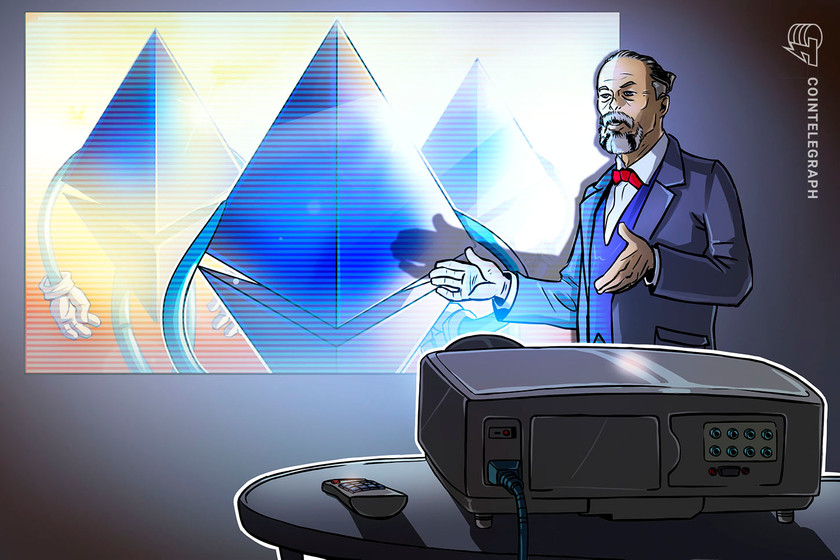Ethereum price metrics hint that ETH might not sell-off after the Shapella hard fork


ETH traders are exercising caution ahead of the April 12 Shapella hard fork, but the signal to watch is staking unlock requests.
Ether (ETH) price has increased by 58% year to date, but it has far underperformed the market leader Bitcoin (BTC). In fact, the ETH/BTC price ratio has dropped to 0.063, its lowest level in nine months.
Analysts believe that the majority of the movement can be attributed to the Ethereum network’s upcoming Shapella hard fork, which is scheduled for April 12 at 10:27 p.m. UTC.


The Ethereum network upgrade will allow stakers to unlock their Ether rewards or stop staking entirely. By April 11, over 170,000 ETH withdrawals were requested, according to the analytics firm Glassnode. However, the total staked on the Beacon Chain exceeds 18.1 million ETH, which has traders fearful until more information on ETH’s potential selling pressure becomes available.
Is the price impact of the Shapella fork already priced in?
The staking unlock was widely known and expected, so traders could have anticipated the movement. Some analysts have gone so far as to call the hard fork a “buy the news” event.
Literally everyone: “Ethereum Shanghai is a buy the news event because everyone thinks it is a sell the news event” pic.twitter.com/TpyL1TDnPj
— HORSE (@CanteringClark) April 9, 2023
Using a meme, trader CanteringClark is likely expressing dissatisfaction with the theory, but to invalidate the hypothesis, one must investigate potential reasons for ETH’s underperformance other than the much anticipated hard fork.
For starters, the Ethereum network’s average transaction fee has been above $5 for the past five weeks, and the Shapella fork does not address the issue, despite minor improvements. This alone lowers the chances of a bullish breakout following the upgrade, as most decentralized applications (DApps) and projects will continue to prefer second-layer and competing networks.
Furthermore, volume at Ethereum-based decentralized exchanges (DEX) has fallen by 84% since a weekly peak of $38.2 billion on March 5. The most recent data for the week ending April 2 was $6.4 billion, according to DefiLlama. In the same period, competing blockchains saw 60% lower volumes on average, a sign that Ethereum lost market share.
According to Paul Brody, EY’s global blockchain leader, one reason for Ether’s price underperformance relative to Bitcoin could be “the battle to keep Ethereum sufficiently and properly decentralized.” Brody cites exchanges as highly centralized custodial validators, as well as some semi-centralized players and staking pool operations that invest funds from tens of thousands of individual crypto wallets.
Ether derivatives display balanced bets between bulls and bears
Let’s examine Ether derivatives metrics to determine the current market position of professional traders. For example, the open interest in Ether options for the weekly expiry on April 14 is $510 million, with neutral-to-bullish call instruments outnumbering protective put options by 36%.
Those ETH options bulls could come up empty-handed because 60% of their bets were placed at $2,000 or higher. As a result, if Ether’s price remains between $1,800 and $1,900 on April 14 at 8:00 am UTC, the outcome is balanced between call and put options. Furthermore, an expiry price between $1,900 and $2,000 represents a mere $100 million advantage for bulls, which is unlikely to justify the cost of a price pump.
Futures markets should also be examined to determine whether the Shapella hard fork has caused investors to become more risk-averse. Ether quarterly futures are popular among whales and arbitrage desks, and they typically trade at a slight premium to spot markets, indicating that sellers are requesting more money to postpone settlement.
As a result, futures contracts in healthy markets should trade at a 5% to 10% annualized premium — a situation known as contango, which is not unique to crypto markets.


The premium on Ether futures is currently 2%, down from 4% the previous week. Despite being below the 5% neutral threshold, it shows no excessive short demand.
Related: Validator service to use API for ETH staking process
Traders should monitor staking unlock requests
Based on Ether derivatives, there is no reason to believe professional traders expect a significant price correction as a result of the staking unlock. Nonetheless, given the high transaction fees and declining DEX activity, the chances of a “buy the news” event are slim.
Professional traders would have used derivatives instruments to bet against Ether’s price because the event was widely publicized, which hasn’t happened given the ETH futures’ premium. There are no obvious reasons for a rally, but derivatives traders do not anticipate any panic selling. So, unless the number of staking unlock requests significantly increases, Ether should remain near $1,900 for the foreseeable future.
The views, thoughts and opinions expressed here are the authors’ alone and do not necessarily reflect or represent the views and opinions of Cointelegraph.
This article does not contain investment advice or recommendations. Every investment and trading move involves risk, and readers should conduct their own research when making a decision.















